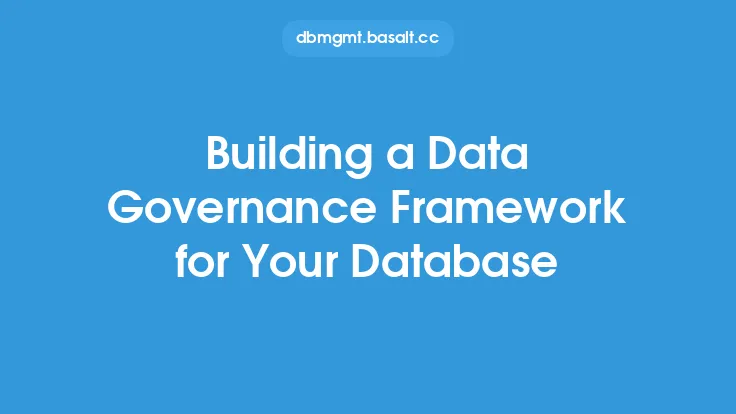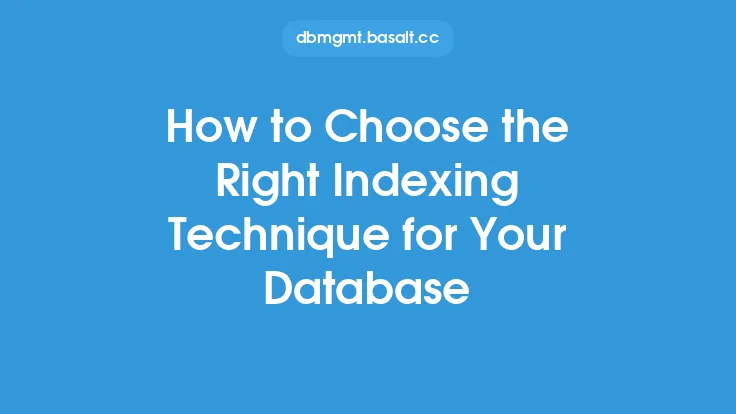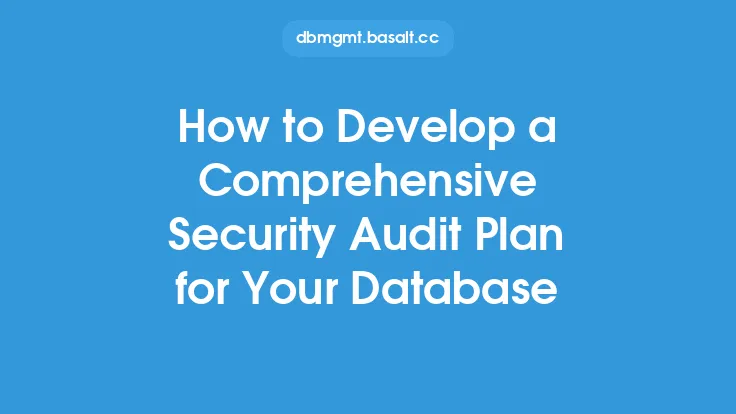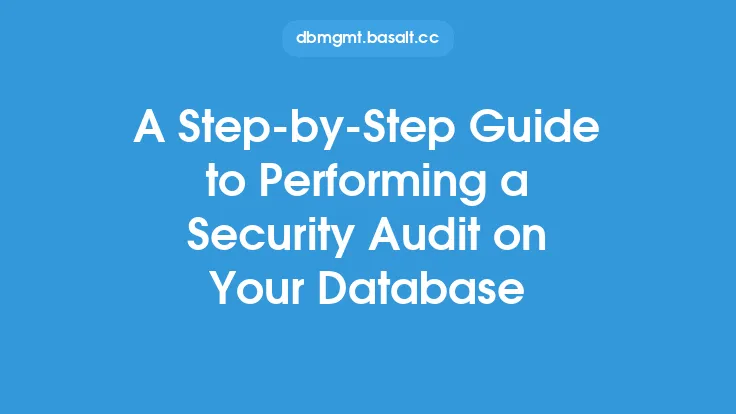Implementing data masking in your database is a crucial step in protecting sensitive information from unauthorized access. Data masking is a technique used to hide or obscure sensitive data, making it unusable to unauthorized users. In this article, we will delve into the details of implementing data masking in your database, providing you with a comprehensive guide to get started.
Understanding the Requirements
Before implementing data masking, it's essential to understand the requirements of your organization. Identify the sensitive data that needs to be protected, such as credit card numbers, social security numbers, or personal identifiable information (PII). Determine the level of protection required for each type of data and the regulations that govern its use, such as GDPR, HIPAA, or PCI-DSS. This will help you choose the most suitable data masking technique and ensure compliance with relevant regulations.
Choosing a Data Masking Technique
There are several data masking techniques to choose from, including substitution, encryption, and redaction. Substitution involves replacing sensitive data with fictional data, while encryption involves converting data into an unreadable format using algorithms. Redaction involves removing or hiding sensitive data, making it inaccessible to unauthorized users. The choice of technique depends on the type of data, the level of protection required, and the regulations that govern its use. For example, encryption is often used for credit card numbers, while substitution is used for PII.
Preparing Your Database
Before implementing data masking, it's essential to prepare your database. This involves identifying the tables and columns that contain sensitive data and creating a backup of your database. You should also ensure that your database is up-to-date with the latest security patches and updates. Additionally, consider implementing access controls, such as role-based access control (RBAC), to restrict access to sensitive data.
Implementing Data Masking
Implementing data masking involves creating a data masking policy and applying it to your database. A data masking policy defines the rules for masking sensitive data, including the type of data to be masked, the masking technique to be used, and the level of protection required. You can create a data masking policy using a data masking tool or by writing custom scripts. Once the policy is created, apply it to your database using a data masking tool or by executing the custom scripts.
Data Masking Tools and Scripts
There are several data masking tools available, including commercial and open-source tools. Commercial tools, such as Oracle Data Masking and IBM InfoSphere Optim, provide a user-friendly interface for creating and applying data masking policies. Open-source tools, such as Data Masker and Apache NiFi, provide a flexible and customizable solution for data masking. You can also write custom scripts using programming languages, such as Python or SQL, to implement data masking.
Testing and Validation
After implementing data masking, it's essential to test and validate the masked data. This involves verifying that the masked data is accurate and consistent with the original data. You should also test the data masking policy to ensure that it is working correctly and that sensitive data is properly protected. Additionally, consider performing regular audits to ensure that the data masking policy is up-to-date and effective.
Maintenance and Updates
Data masking is not a one-time task; it requires ongoing maintenance and updates. Regularly review and update your data masking policy to ensure that it remains effective and compliant with relevant regulations. Additionally, consider implementing a data masking workflow that automates the process of creating, applying, and updating data masking policies. This will help ensure that sensitive data remains protected and that your organization remains compliant with relevant regulations.
Common Challenges and Solutions
Implementing data masking can be challenging, especially in complex databases with multiple tables and columns. Common challenges include data consistency, data integrity, and performance issues. To overcome these challenges, consider using data masking tools that provide real-time data masking, data validation, and performance optimization. Additionally, consider implementing a data masking strategy that involves masking data at multiple levels, including the application, database, and storage levels.
Best Practices for Implementation
To ensure successful implementation of data masking, follow best practices, such as:
- Identify and classify sensitive data
- Choose the right data masking technique
- Implement access controls and role-based access control
- Test and validate masked data
- Regularly review and update data masking policies
- Consider implementing a data masking workflow
- Use data masking tools and scripts to automate the process
- Monitor and audit data masking policies to ensure compliance and effectiveness.
By following these best practices and considering the technical aspects of data masking, you can ensure that your database is properly protected and that sensitive information remains secure. Remember, data masking is an ongoing process that requires regular maintenance and updates to ensure that sensitive data remains protected and that your organization remains compliant with relevant regulations.





